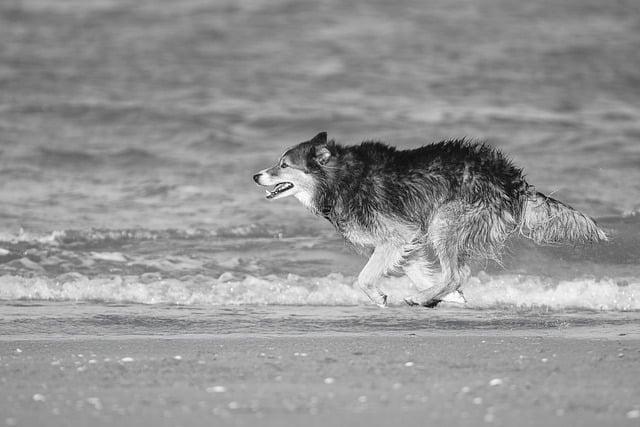Max, a lively golden retriever, was always eager for mealtime. His owner, Sarah, loved him dearly but struggled with how much to feed him. One day, she noticed Max seemed sluggish and less playful. Concerned, she consulted a vet who explained that proper portion control is crucial for a dog’s health. With a tailored feeding plan, Max regained his energy and joy. Just like Max, your furry friend deserves the right nutrition. Don’t guess—consult a professional to ensure your dog thrives!
Contents
- Understanding Your Dogs Nutritional Needs
- Factors Influencing Daily Food Intake
- Choosing the Right Type of Dog Food
- Establishing a Feeding Routine for Optimal Health
- Q&A
Understanding Your Dogs Nutritional Needs
Determining the right amount of food for your dog is essential for their overall health and well-being. Each dog is unique, and their nutritional needs can vary based on several factors, including age, breed, size, activity level, and health status. Understanding these variables will help you make informed decisions about your dog’s diet, ensuring they receive the right balance of nutrients to thrive.
When assessing your dog’s dietary requirements, consider the following factors:
- Age: Puppies require more calories to support their rapid growth, while senior dogs may need fewer calories to maintain a healthy weight.
- Breed: Larger breeds often need more food than smaller breeds, but they also have different nutritional needs based on their size and metabolism.
- Activity Level: Active dogs burn more calories and may require a higher intake of food compared to those that are more sedentary.
- Health Status: Dogs with specific health conditions may need specialized diets that can affect their daily caloric intake.
Once you have evaluated these factors, you can refer to feeding guidelines provided by dog food manufacturers. These guidelines typically offer a recommended daily amount based on your dog’s weight and activity level. However, it’s important to remember that these are just starting points. Regularly monitor your dog’s weight and adjust their food intake as necessary to prevent obesity or malnutrition.
In addition to quantity, the quality of the food you choose plays a crucial role in meeting your dog’s nutritional needs. Look for high-quality dog food that lists meat as the first ingredient and contains a balanced mix of proteins, fats, carbohydrates, vitamins, and minerals. Consulting with your veterinarian can also provide personalized recommendations tailored to your dog’s specific needs, ensuring they receive the best possible nutrition for a long and healthy life.
Factors Influencing Daily Food Intake
When determining the appropriate amount of food for your dog, several factors come into play that can significantly influence their daily intake. **Age** is a primary consideration; puppies require more calories to support their rapid growth and development, while older dogs may need fewer calories to maintain a healthy weight. Understanding your dog’s life stage is crucial in tailoring their diet to meet their specific needs.
Another important aspect is **activity level**. Active dogs, such as working breeds or those that enjoy regular exercise, will need more calories to fuel their energy expenditure. Conversely, sedentary dogs may require less food to avoid weight gain. Assessing your dog’s daily routine and lifestyle can help you determine the right amount of food to keep them healthy and energetic.
**Breed size** also plays a significant role in food intake. Larger breeds generally require more food than smaller breeds, but it’s essential to consider their unique metabolic rates. For instance, a Great Dane will have different nutritional needs compared to a Chihuahua, despite both being dogs. Tailoring your dog’s diet according to their breed can help prevent obesity and related health issues.
Lastly, **health conditions** should not be overlooked. Dogs with specific medical issues, such as diabetes or allergies, may require specialized diets that can affect their daily food intake. Consulting with a veterinarian can provide valuable insights into how to adjust your dog’s diet based on their health status, ensuring they receive the right nutrients without overfeeding.
Choosing the Right Type of Dog Food
When it comes to your dog’s diet, selecting the right type of food is crucial for their overall health and well-being. With a plethora of options available, it’s essential to consider factors such as age, breed, size, and any specific health concerns your dog may have. **High-quality ingredients** should be a priority, as they provide the necessary nutrients that support your dog’s growth, energy levels, and immune system.
One of the primary choices you will face is between **dry kibble** and **wet food**. Dry kibble is often more convenient, has a longer shelf life, and can help maintain dental health through its crunchy texture. On the other hand, wet food can be more palatable for picky eaters and provides additional moisture, which is beneficial for dogs that may not drink enough water. Consider your dog’s preferences and needs when making this decision.
Another important aspect is the **life stage** of your dog. Puppies require a diet rich in protein and calories to support their rapid growth, while adult dogs need a balanced diet to maintain their health. Senior dogs may benefit from specialized formulas that address joint health and lower calorie content to prevent obesity. Always look for food that is specifically formulated for your dog’s life stage to ensure they receive the right nutrients.
Lastly, don’t overlook the importance of **special dietary needs**. Some dogs may have allergies or sensitivities to certain ingredients, while others may require a prescription diet due to health issues like diabetes or kidney disease. Consulting with your veterinarian can provide valuable insights into the best food options tailored to your dog’s unique requirements. By making informed choices, you can help ensure your furry friend enjoys a long, healthy, and happy life.
Establishing a Feeding Routine for Optimal Health
Establishing a consistent feeding routine is crucial for your dog’s overall health and well-being. Dogs thrive on predictability, and a regular schedule helps regulate their digestion and metabolism. By feeding your dog at the same times each day, you can help prevent issues such as obesity and gastrointestinal problems. A structured routine also allows you to monitor your pet’s eating habits closely, making it easier to identify any changes that may indicate health concerns.
When determining how much to feed your dog, consider their age, weight, activity level, and overall health. Each dog is unique, and their nutritional needs can vary significantly. It’s essential to consult with your veterinarian to establish the right portion sizes based on these factors. Generally, you can follow these guidelines:
- Puppies: Require more frequent meals, typically 3-4 times a day.
- Adult dogs: Usually thrive on 1-2 meals per day.
- Senior dogs: May benefit from smaller, more frequent meals to aid digestion.
In addition to portion sizes, the quality of the food you choose plays a vital role in your dog’s health. Opt for high-quality dog food that meets the nutritional standards set by the Association of American Feed Control Officials (AAFCO). Look for ingredients that provide essential nutrients, such as proteins, fats, vitamins, and minerals. Avoid fillers and artificial additives that can lead to health issues over time.
Lastly, be mindful of treats and snacks, as they can contribute significantly to your dog’s daily caloric intake. While it’s important to reward your pet, moderation is key. Incorporate healthy treats and adjust their main meals accordingly to maintain a balanced diet. By establishing a feeding routine that prioritizes quality and consistency, you can help ensure your dog enjoys a long, healthy, and happy life.
Q&A
-
How do I determine the right amount of food for my dog?
To determine the right amount of food for your dog, consider their age, weight, activity level, and health status. Most dog food packaging provides feeding guidelines based on these factors. Additionally, consulting with your veterinarian can provide personalized recommendations tailored to your dog’s specific needs.
-
Should I adjust my dog’s food intake based on their activity level?
Absolutely! Active dogs require more calories to maintain their energy levels, while less active or senior dogs may need fewer calories to prevent weight gain. Regularly assess your dog’s activity level and adjust their food intake accordingly to ensure they remain healthy and fit.
-
How often should I feed my dog each day?
Most adult dogs thrive on two meals per day, while puppies may require three to four smaller meals. Establishing a consistent feeding schedule helps regulate your dog’s digestion and can prevent overeating. Always monitor your dog’s response to the feeding schedule and adjust as necessary.
-
What should I do if my dog is overweight?
If your dog is overweight, it’s crucial to consult with your veterinarian for a tailored weight loss plan. This may include reducing food portions, switching to a lower-calorie diet, and increasing exercise. Gradual weight loss is essential for your dog’s health, so avoid drastic changes without professional guidance.
understanding your dog’s dietary needs is crucial for their health and happiness. By providing the right amount of food tailored to their age, size, and activity level, you ensure a longer, healthier life for your furry companion. Make informed choices today!




